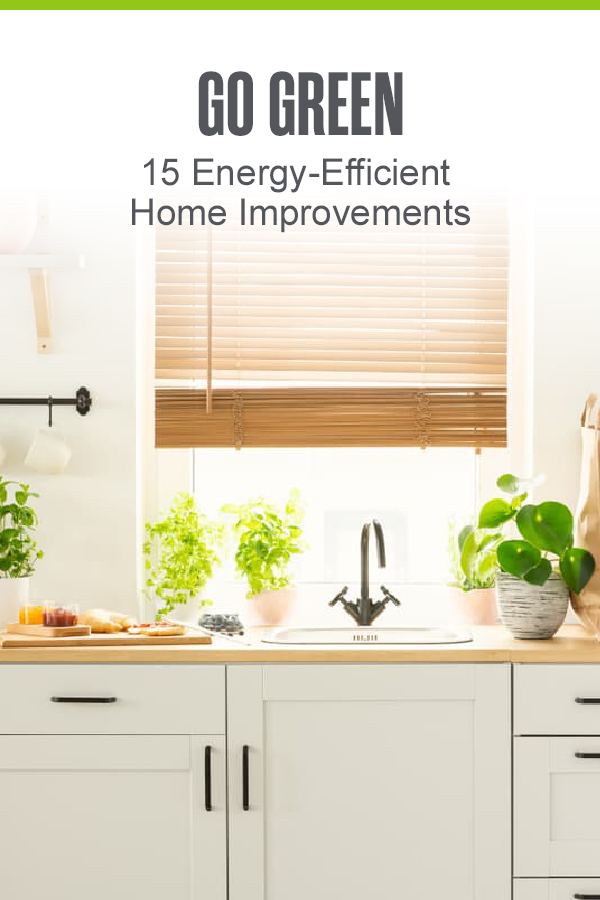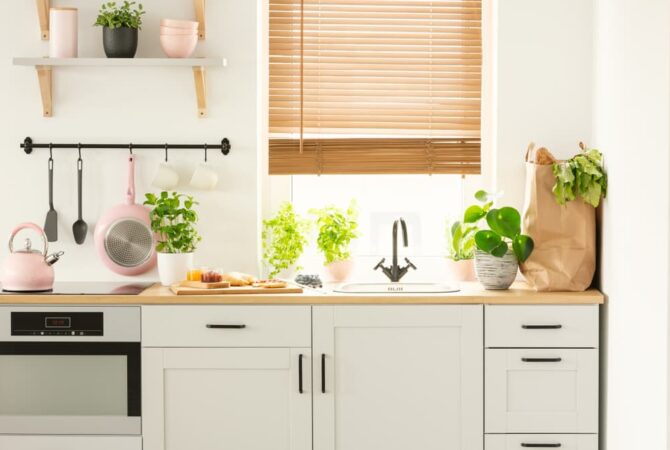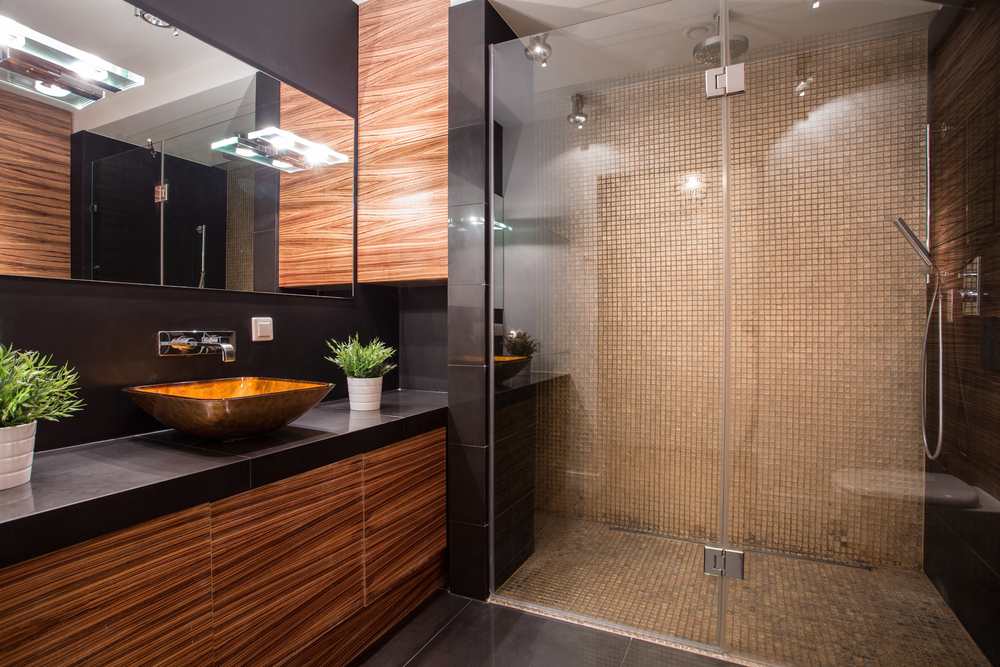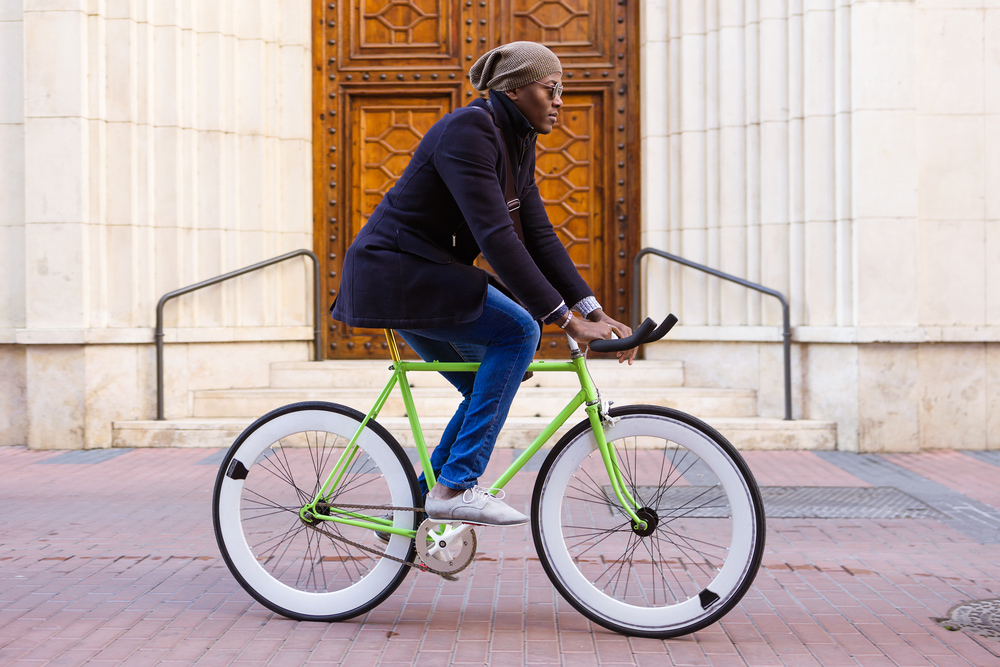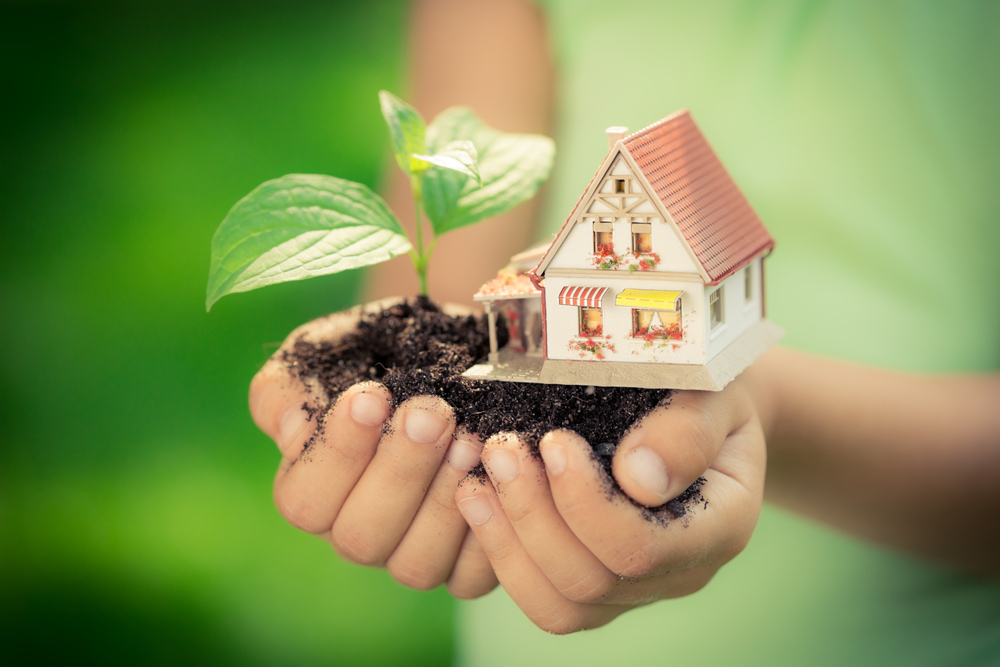Want to make your home more energy-efficient? There are many benefits to having a sustainable home, including tax incentives, reducing your carbon footprint, and lower energy bills. Plus, most of these improvements are home features buyers want, so they can increase the resale value of your property. Ready to go green at home? Check out these 15 eco-friendly projects to enhance your space!
Replace Your Light Bulbs
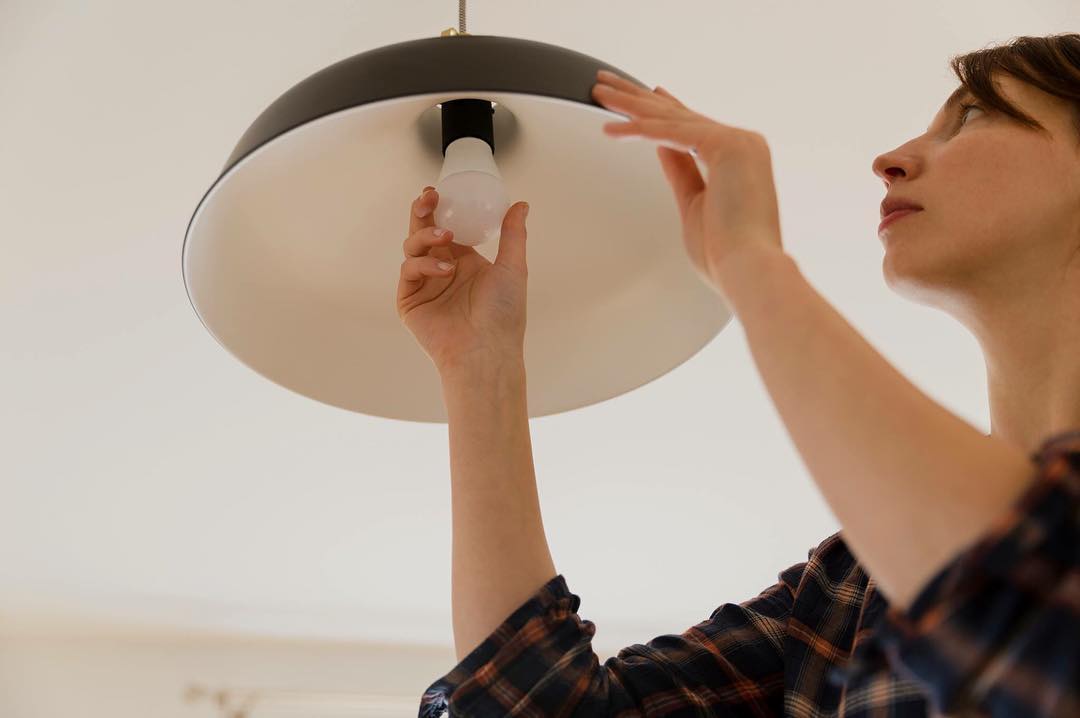
Photo via @connexcreditunion
An easy, inexpensive, and energy-efficient home improvement is to replace incandescent light bulbs with LED bulbs. One ENERGY STAR certified light bulb lasts 15 times longer and uses up to 90% less energy than an incandescent bulb. While LED light bulbs cost around $5 a bulb, LED lighting can save your household around $225 in energy costs per year. Or invest in smart lighting that can be controlled through an app or smart speaker to easily track and control your energy use, even when you aren’t at home. Another green tip is to switch your exterior landscape lighting to LED versions to save even more energy!
Get a Smart Thermostat
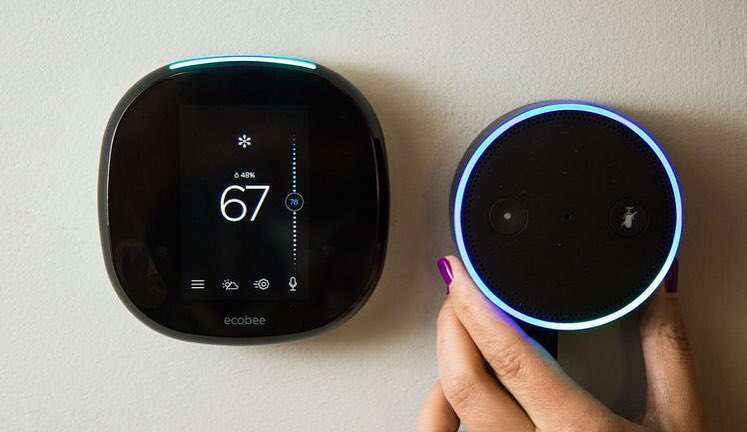
Photo via @advantageairtechclimatecare
There’s a reason programmable thermostats continue to grow in popularity! Smart thermostats can be programmed to adjust the temperature when no one’s home or when everyone is headed to bed. This green home improvement requires minimal effort and investment, and can save your household up to $200 a year. More recent models of this energy-efficient home feature can even decrease your energy bill by 10%.
Recaulk & Weatherstrip to Fix Leaks
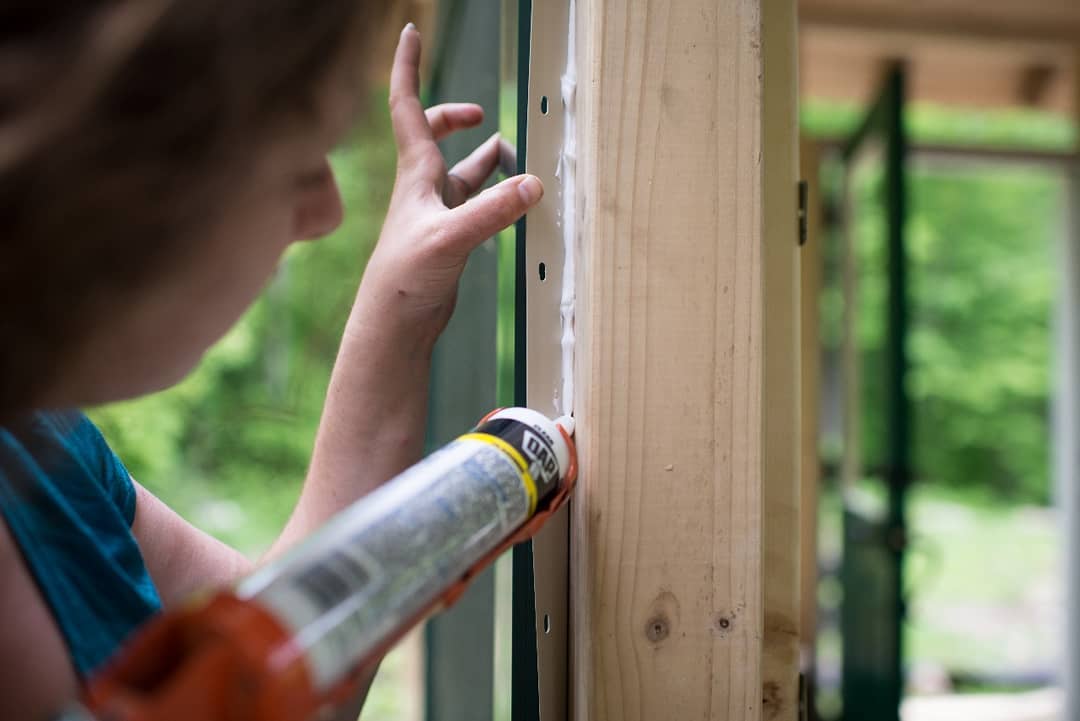
Photo via @gharpedia
Wanting energy-efficient home renovations on a budget? Recaulking and weatherstripping could save you 5-10% on your home heating costs with minimal effort and no extra installation costs. Before you go all out replacing windows and doors, check your home for air leaks—because windows aren’t always the culprit of leaks. Common areas that can develop leaks are baseboards, window frames, vents, fans, and other areas of your home that may not have as much support or insulation from outdoors. Weatherstripping is another way to make doors or windows—especially those in older homes—more energy efficient. Even putting plastic over windows during colder months can improve insulation and conserve energy.
Add Ceiling Fans

Photo via @cortneybishopdesign
For your next energy-efficient home renovation project, use ceiling fans to get air flowing! New fans add a modern touch to any room and can help lower your energy usage by 40% during warmer months, and 10% during winter. An easy green home tip is to run your ceiling fans counterclockwise in the summer for cooling and clockwise in the winter to circulate warm air from the ceiling. While there isn’t a specific ceiling fan known for being energy efficient, choosing ENERGY STAR certified fans can help ensure you’re not wasting electricity.
Improve Your Insulation
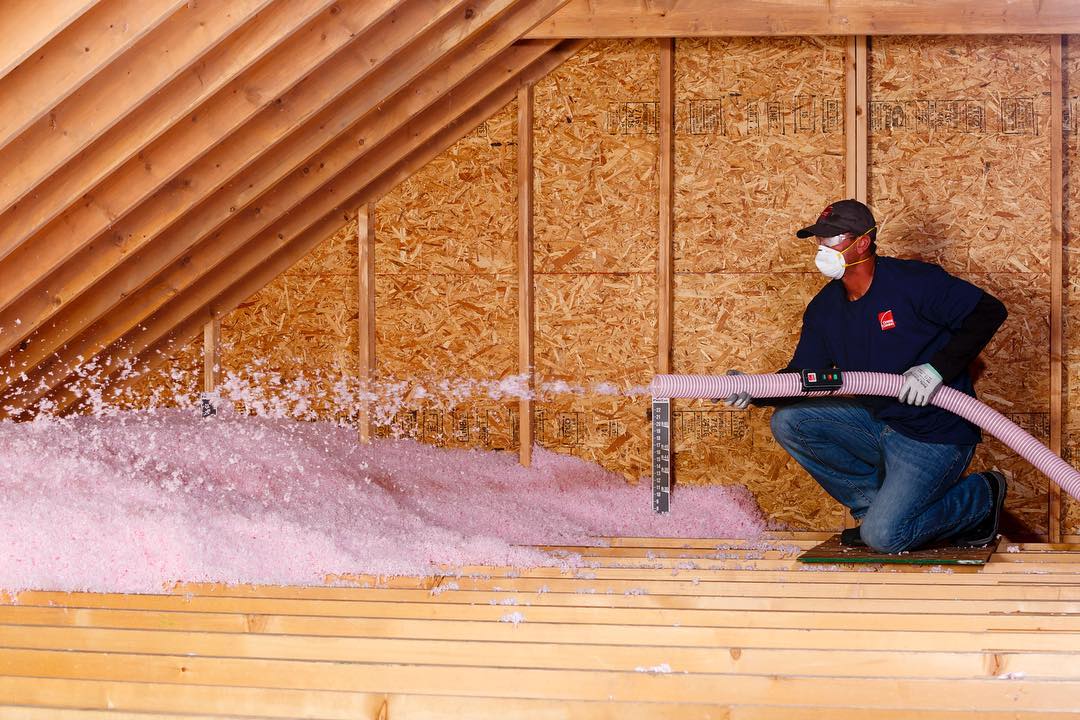
Photo via @garciadidmyroof
If your apartment, condo, or house was built recently using an energy-efficient home design, proper insulation was likely accounted for. However, if you’re making energy-efficient updates to an older home, adding more insulation in key areas like the attic and exterior walls could significantly reduce your heating and AC costs. To find which areas need more insulation, check your home for frosty areas that could indicate air leaks caused by faulty insulation.
Update Windows…
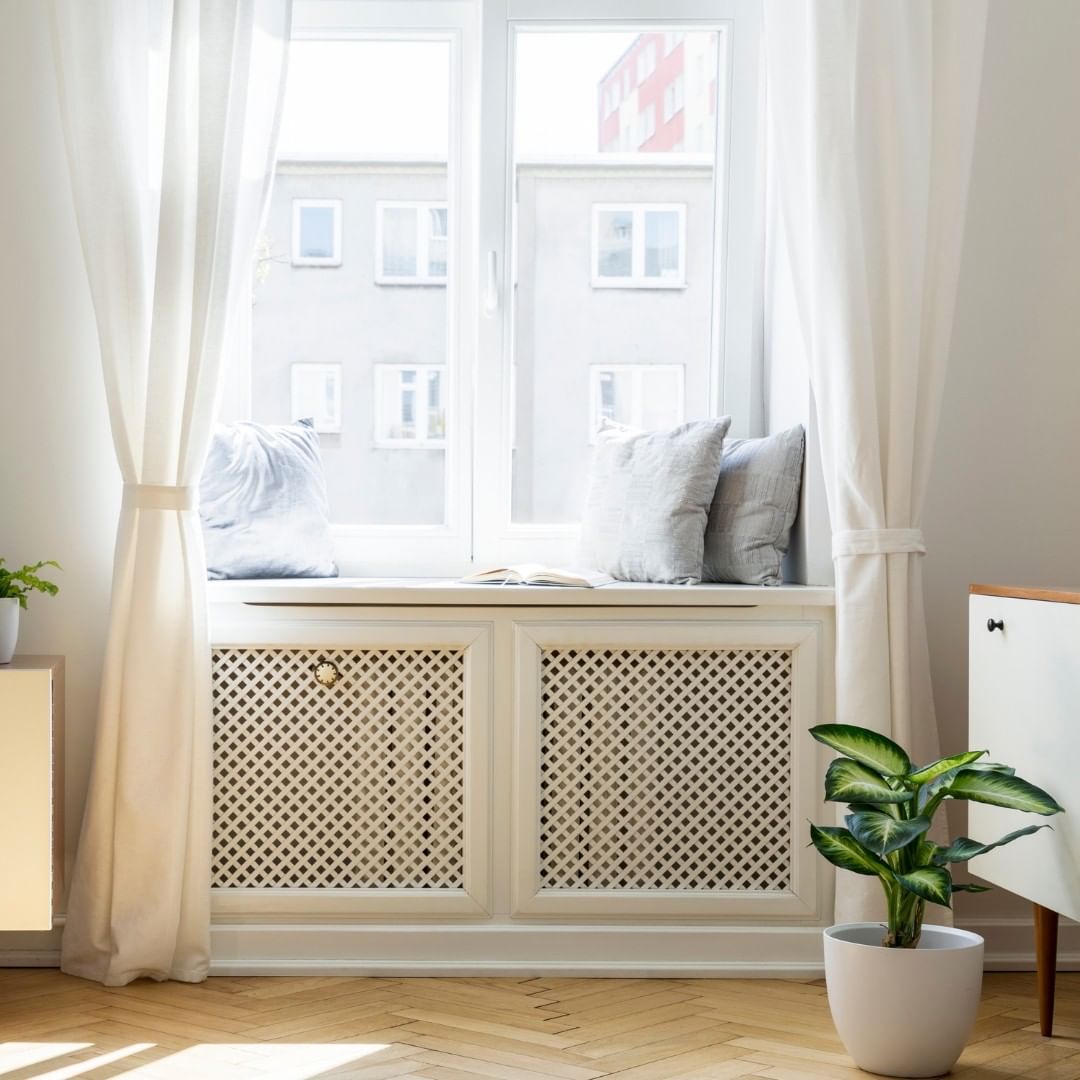
Photo via @falconwindowsdoor
Replacing old, leaky windows is a sustainable renovation idea that can save you up to 50% on energy expenses. New windows will refresh your home on the inside and out, as well as keep hot or cold air from getting in or out. More efficient skylights can also replace outdated models or be added to homes that can benefit from passive solar heating. To set up your home for eco-friendly passive solar heating, install large windows or skylights facing south to collect solar energy, and use thermal mass building materials like concrete, brick, stone, and tile to retain the heat these windows generate in your home.
…and Doors, Too
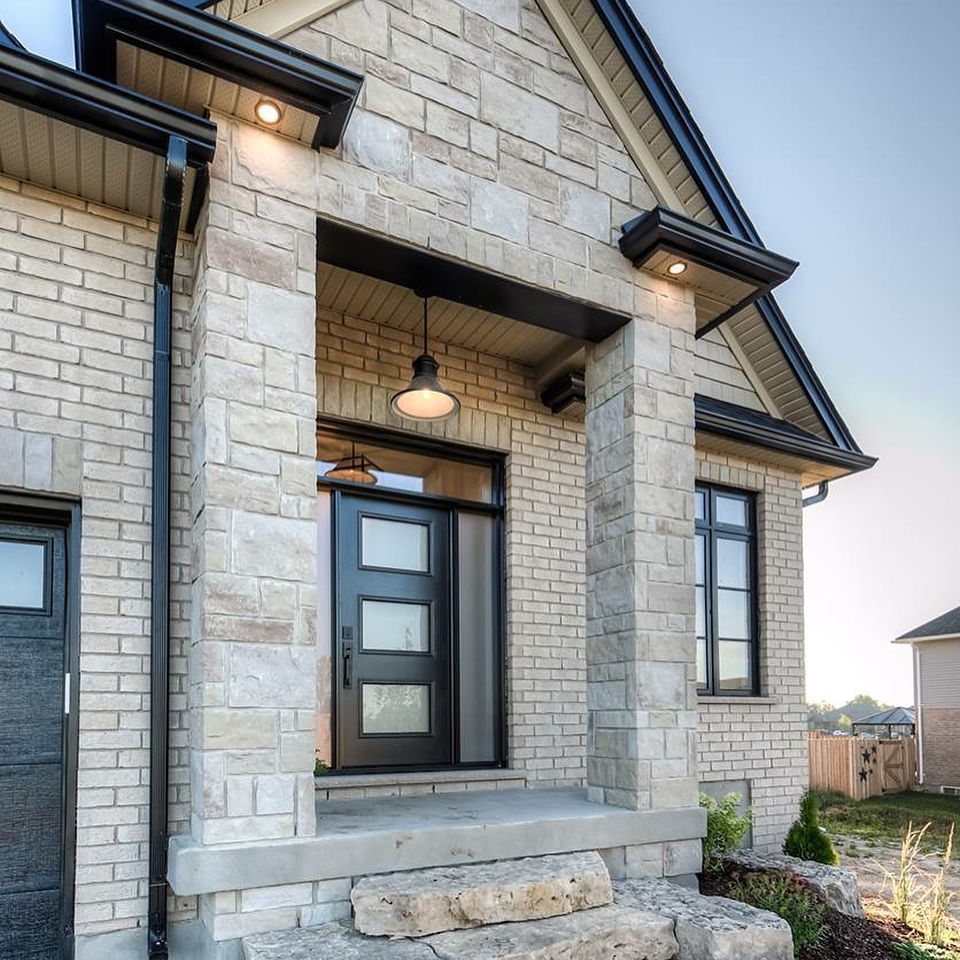
Photo via @duimeringhomes
Replacing your front door with an energy-efficient steel or fiberglass model can save homeowners up to 35% off their energy bills because these materials retain heat better than classic wood. Swapping out old patio doors with thicker and better-insulated models is another green home project to help regulate the temperature in your home.
Try Eco-Friendly Paint or Wallpaper
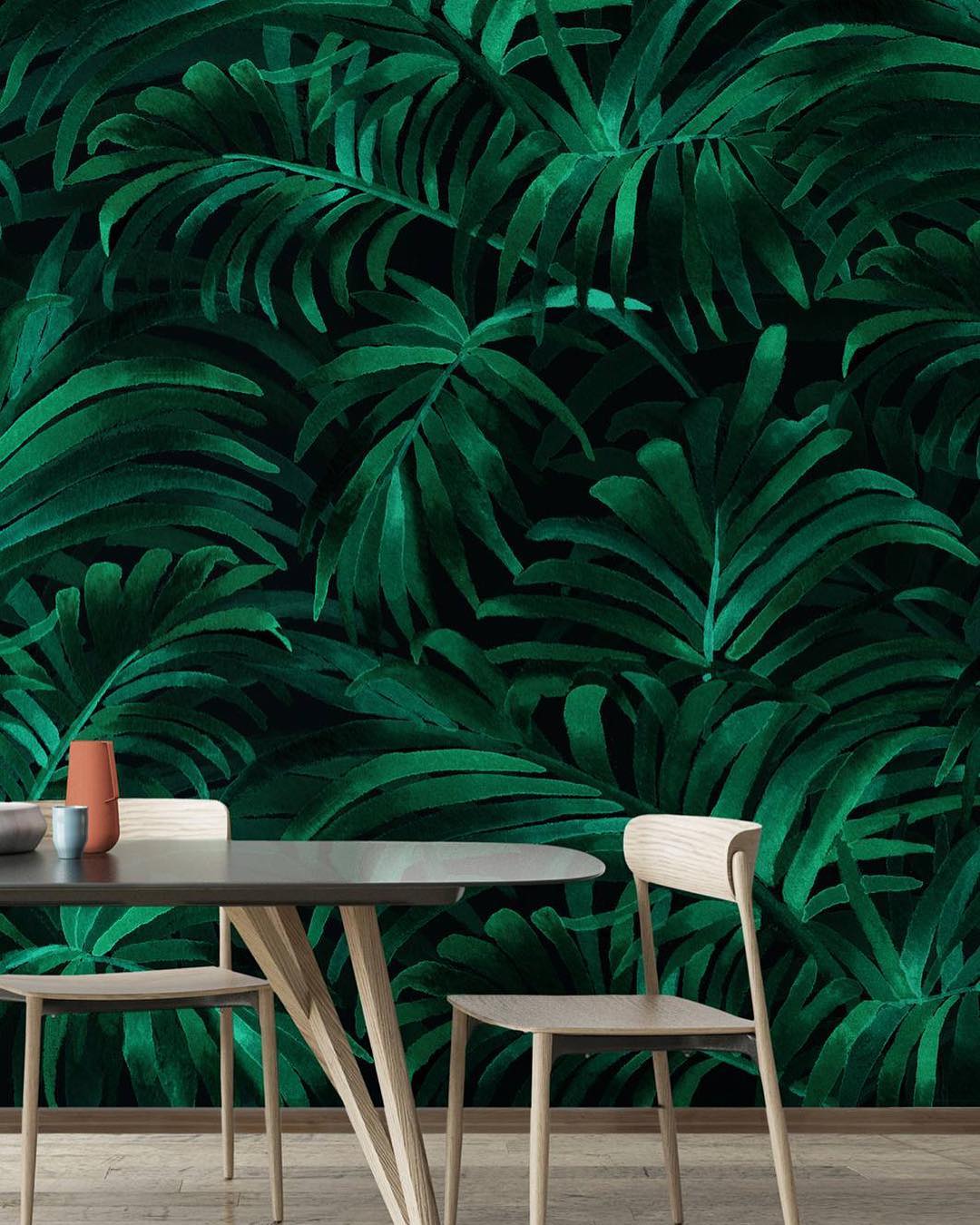
Photo via @dalwindesigns
If you’re planning to make sustainable updates to your bedroom, living room, or den with a fresh coat of paint or funky wallpaper, be sure to use eco-friendly materials like water-based ink printed paper, milk paint, or acrylic paint. Not only does sustainable paint or wallpaper create less waste as it’s being made, but it also keeps airborne toxins out of your home. This can be a good way to save money and conserve energy otherwise used on other methods of removing airborne toxins, like air purifiers. Using lighter colors on the walls can also maximize your home’s energy efficiency by reflecting heat and light.
Replace Your Water Heater
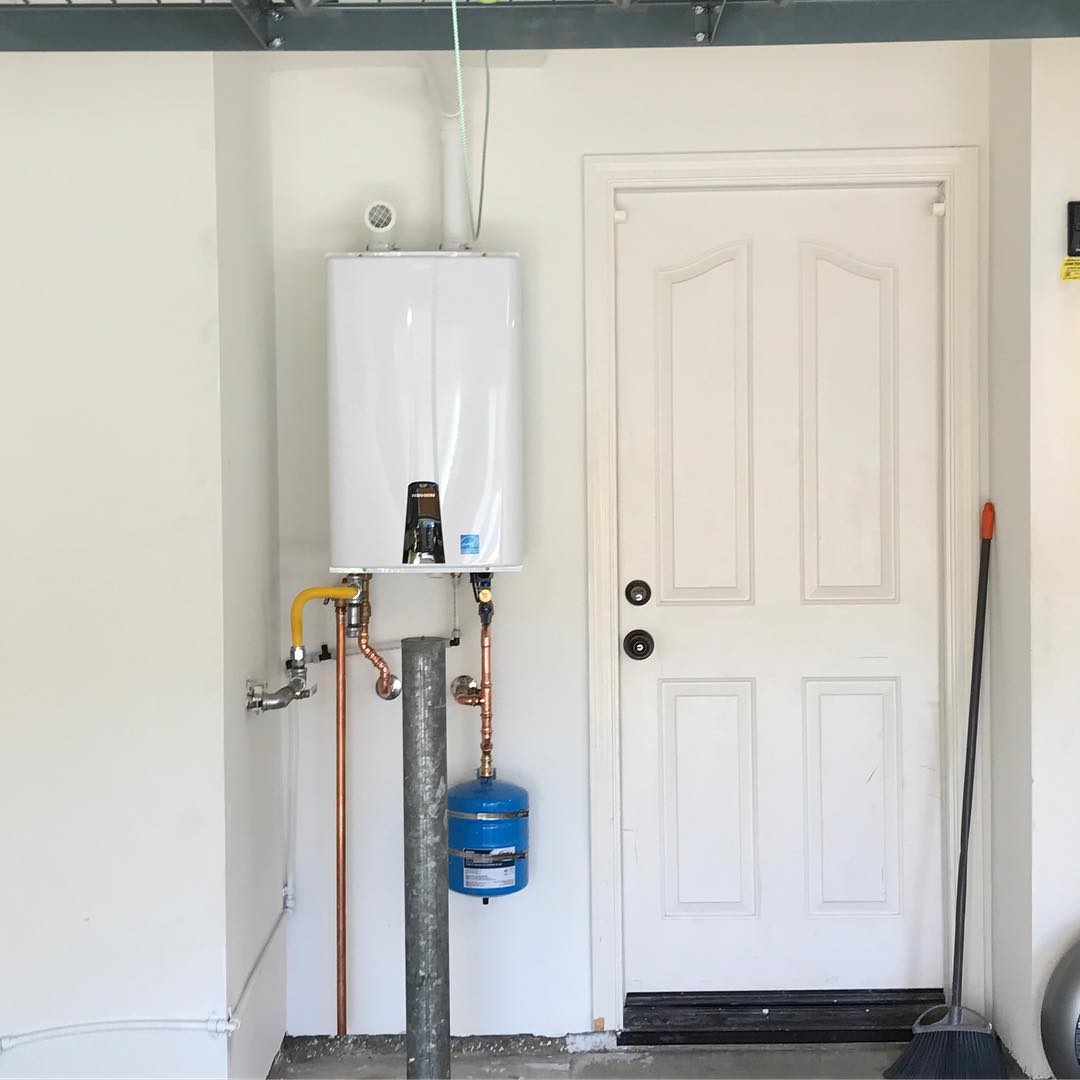
Photo via @swiftwaterheater
Want to lower your water bill? Old storage water heaters waste energy by continuously heating and storing anywhere from 20 to 80 gallons of water in a tank, even when the water isn’t being used. While on-demand tankless water heaters, heat pumps, and solar water heaters are more expensive to buy upfront, they’re 8-50% more energy efficient than traditional storage water heaters because they only heat water when needed. Savings will depend on the size of your water heater, availability of different fuel types in the area, and the amount of water your household uses. Alternatively, adding insulation around hot water pipes is a budget-friendly DIY green home improvement tip that can make your home more energy efficient for $10-$15—a fraction of the cost of major green renovations!
Maximize Your Laundry Room
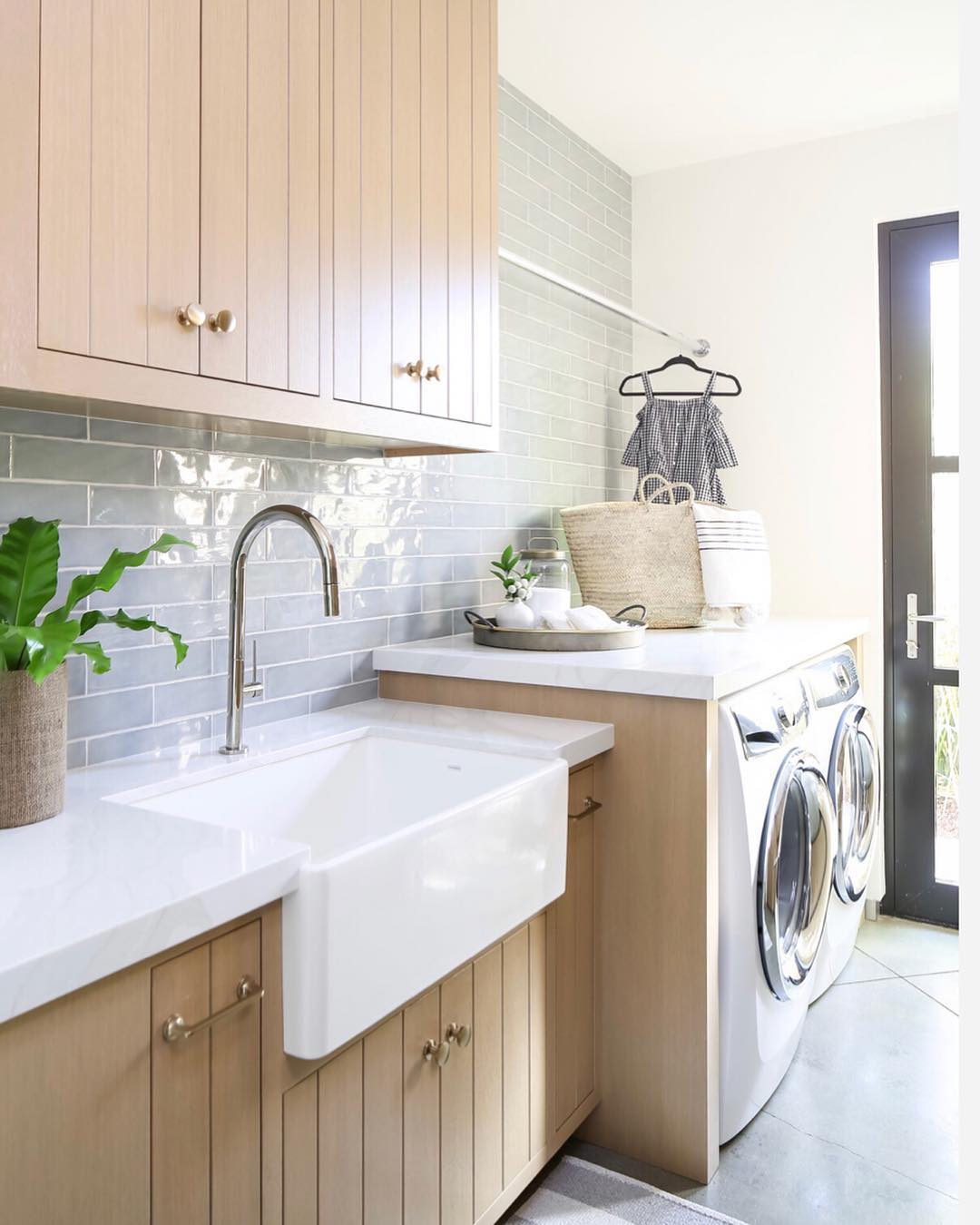
Photo via @brookewagnerdesign
Installing a bin or basket system to sort dirty clothes by color is another green way to help make the most of every load. Only some materials and colors need to be washed in hot water, and washing most loads in cold water—with high-efficiency cold water detergents—can reduce energy usage! You can also add hooks, racks, or a clothesline in your laundry room as a budget-friendly and energy-efficient solution to drying clothes without having to power a dryer.
Update the Kitchen
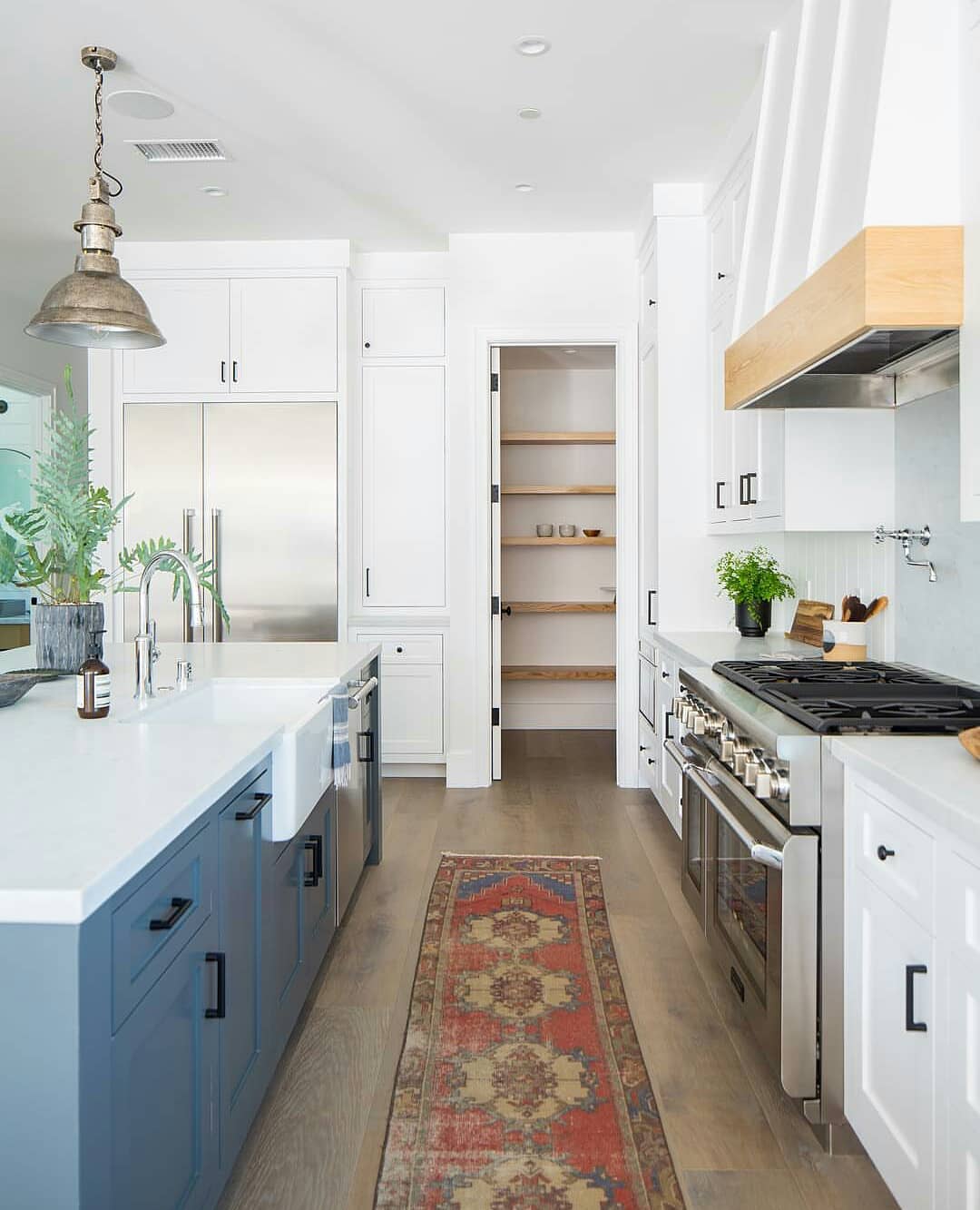
Photo via @appliancestudio
Appliances typically use 13% of the energy in your home, and many are located in the kitchen. Upgrading appliances like refrigerators, ovens, microwaves, dishwashers and more is one of the best ways to have a more energy-efficient home—plus, it can save you money and increase your home’s resale value! Make the most of sustainable renovation costs and replace old appliances with ENERGY STAR certified models, which can reduce your electricity and gas bills. Environmentally-friendly homeowners doing an eco-friendly kitchen remodel can also consider updating kitchen counters with a more sustainable option. Materials like bamboo or reclaimed wood take less energy to produce or recycle existing materials, making this energy-efficient home improvement idea perfect for a green kitchen renovation!
Opt for Low-Flow Fixtures
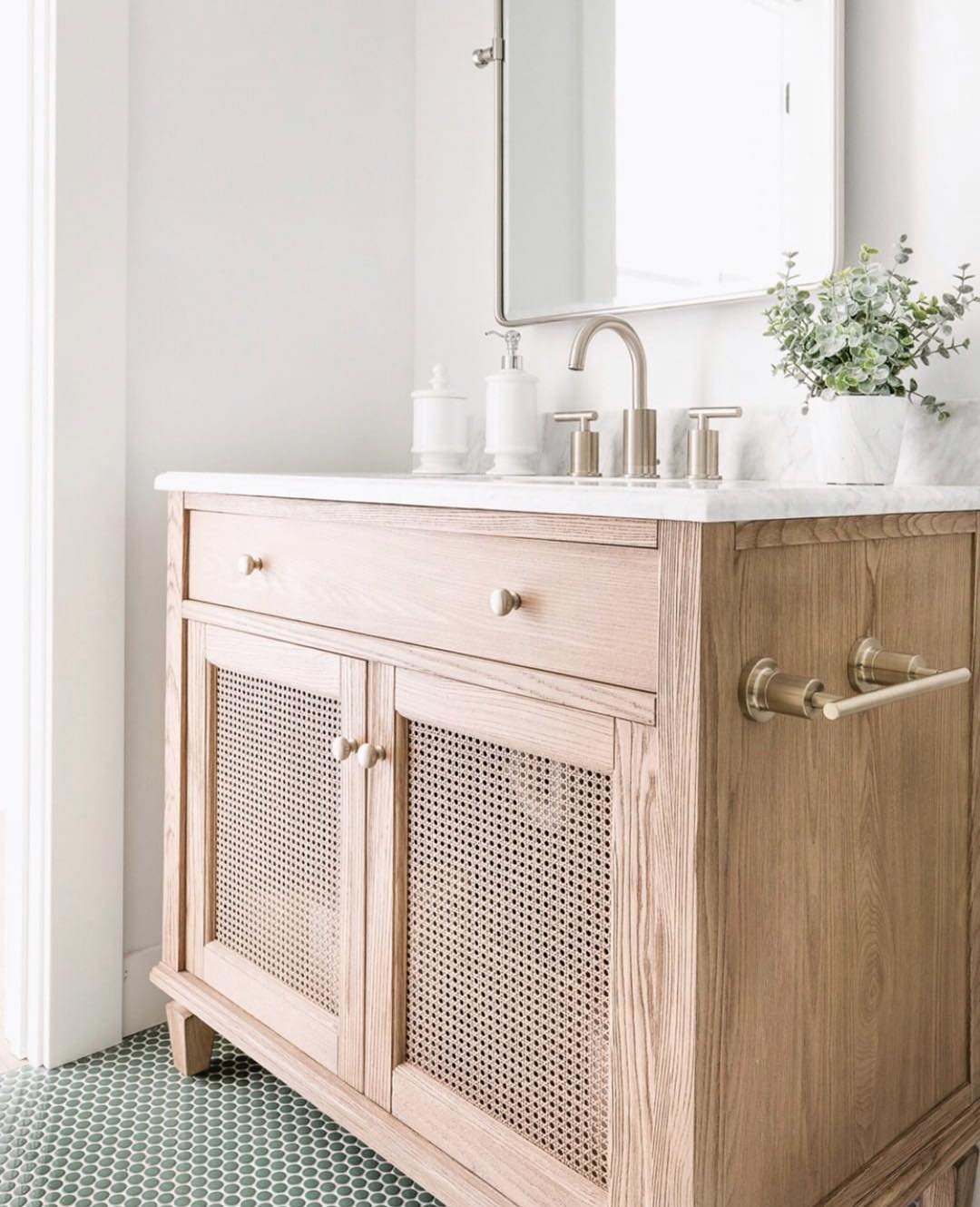
Photo via @sustainable9
Wondering how to go green in an old home? Create an eco-friendly bathroom! Just like the kitchen, remodeling the bathroom can lead to a large increase in resale value. On average, homeowners achieve 64% of costs recouped on a mid-range bathroom remodel. Replace wasteful systems with energy-efficient options like low-flow toilets and low-flow faucets to increase the value of your home, reduce water use by 30%-50%, and potentially save $50-$90 or more a year.
Focus on Your HVAC Systems
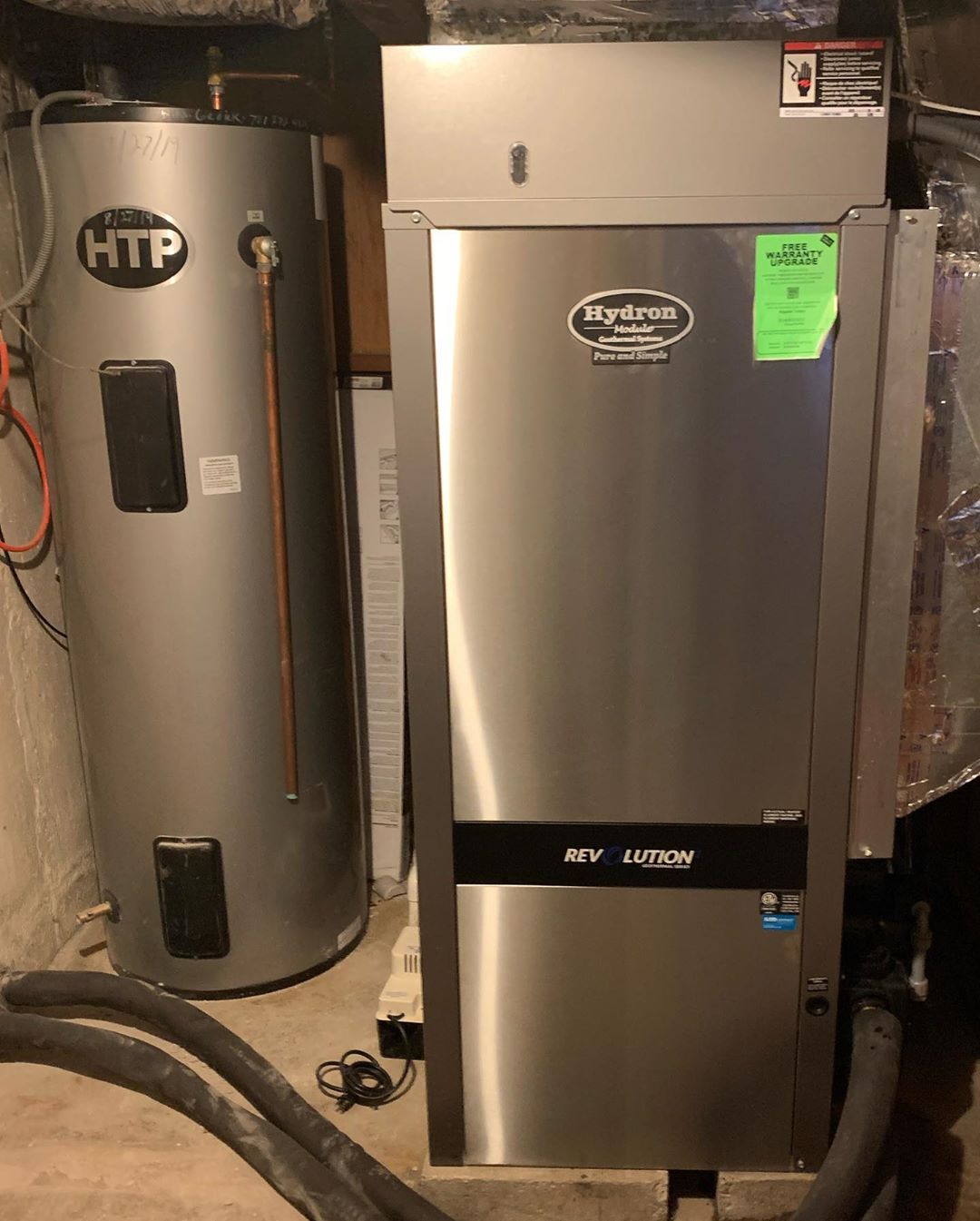
Photo via @energysmartgeo
Did you know heating your space accounts for 45% of energy used in the home? Ductless, mini-split AC units are a sustainable cooling option for home additions or areas where central AC cannot easily be installed. New, eco-friendly technology like geothermal heat pumps are ideal in more temperate climates and can also be used to cool your home. Of course, your HVAC system affects the air quality in your home, too—spreading allergens, bacteria, dust, and more. That’s why a great green renovation idea is to keep your HVAC systems cleaned and well-maintained. HVAC system cleaning improves the longevity of your HVAC systems and overall energy efficiency, making this an easy and cost-effective eco-friendly solution.
Get a Cool Roof
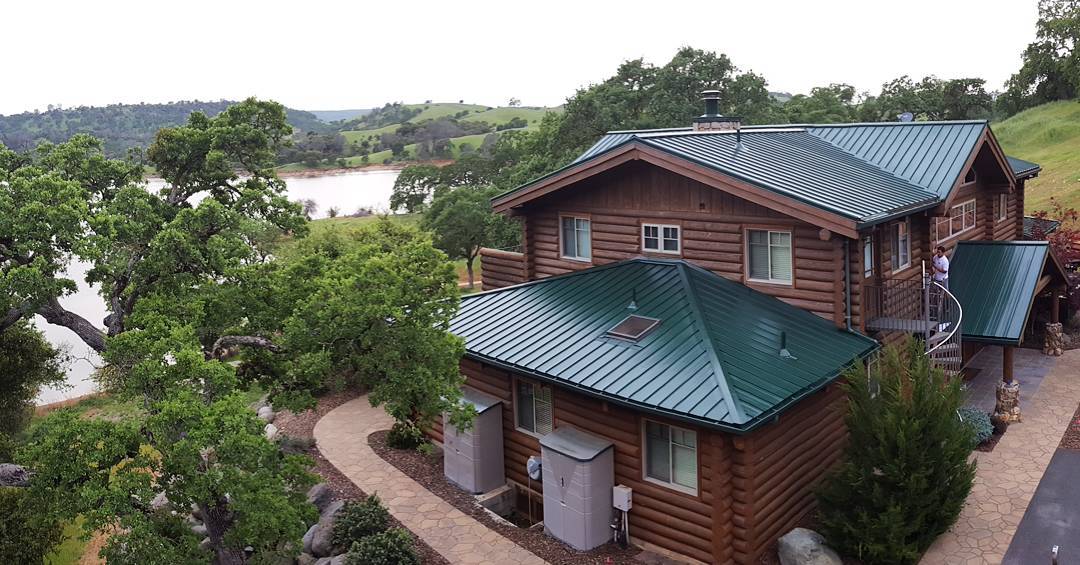
Photo via @california_roof_coating
Replacing your roof is the perfect opportunity to invest in “cooler” technology! Not only will getting a new roof give your exterior a facelift, but it’s also a great time to install an energy-efficient home improvement! Best for warmer climates where annual cooling costs typically exceed heating costs, cool roofs can be created using roofing materials like light-colored metal or asphalt shingles, which reflect heat instead of absorbing it. Not only does this reduce fluctuations in home temperatures, but cool roofs also lower outdoor air temperatures and slow the formation of air pollutants in the neighborhood. You can also create a cool roof by applying a coating to your current roof to help make it colder if yours isn’t ready to be replaced.
Invest in Solar Panels
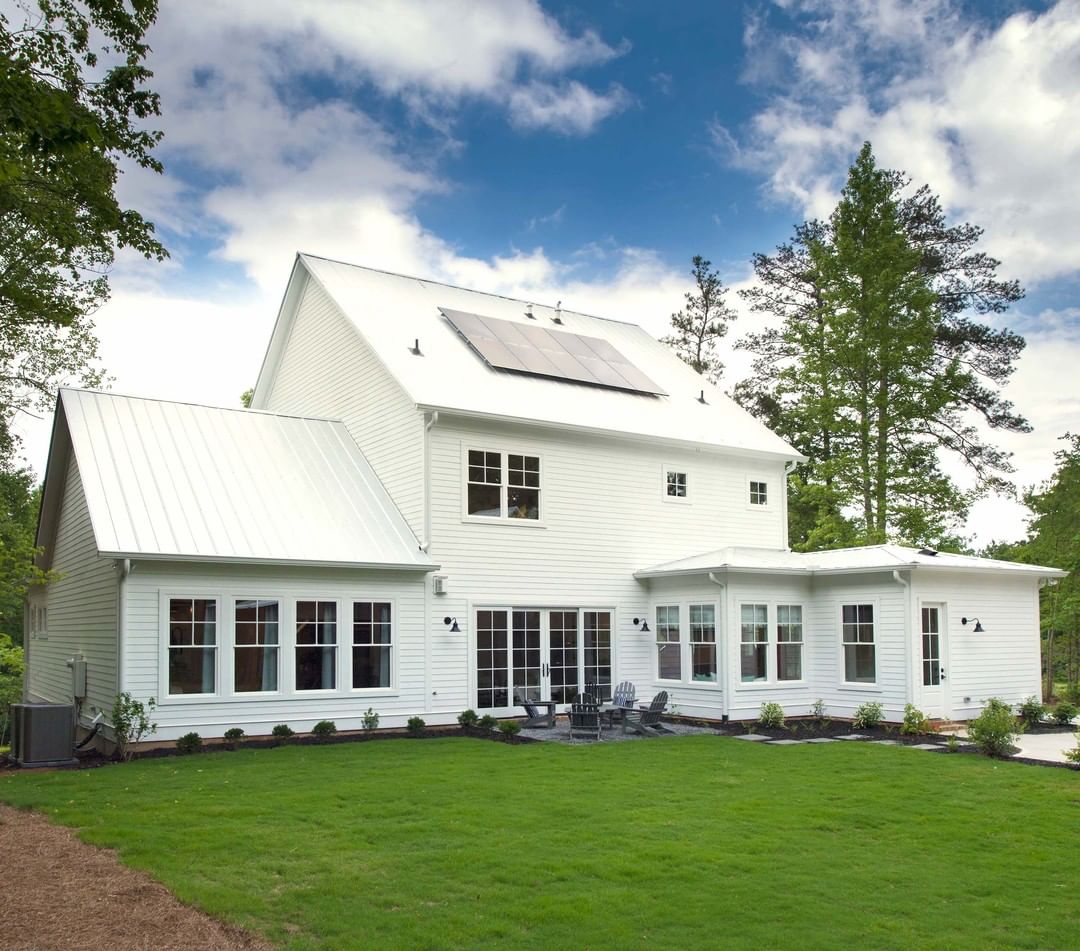
Photo via @brightwaterhomes
If you initially missed the opportunity to build an energy-efficient home, or bought an older home, there’s still time! One major green renovation is to invest in home solar energy. The efficiency of solar power will depend on where you live, if your home is shaded, and the shape of your roof. Since the initial cost to buy and install solar panels comes to between $15,000 and $25,000, be sure to have a professional analyze all of these factors before you take the plunge. You should also check if there are special incentives in your area to promote the change to clean energy. If you do meet the requirements for solar power and want to go green in a big way, consider this clean energy alternative!
***
Ready to do your own energy-efficient home improvements? Extra Space Storage has plenty of self storage facilities throughout the U.S. that can help with your eco-friendly renovations! Find storage units near you!
